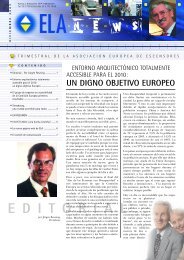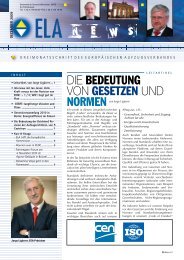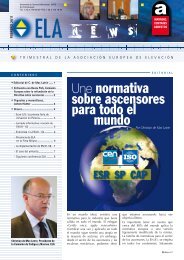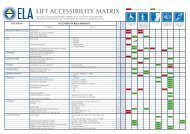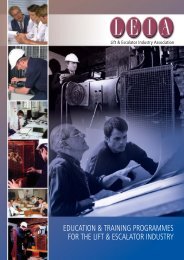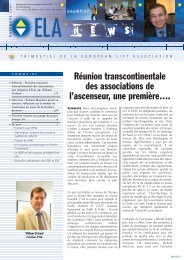WP6-Brochure-E4 brochure - ELA European Lift Association.
WP6-Brochure-E4 brochure - ELA European Lift Association.
WP6-Brochure-E4 brochure - ELA European Lift Association.
Create successful ePaper yourself
Turn your PDF publications into a flip-book with our unique Google optimized e-Paper software.
2 <strong>Lift</strong> and Escalator Technologies<br />
This section intends to provide an overview of typical lift and escalator technologies.<br />
<strong>Lift</strong> systems have generally been individually engineered for each application. Each of its<br />
components contributes differently to the overall efficiency of the lift.<br />
All lifts have common elements, independently of their working principle, including: cars (also<br />
called a "cage" or "cab”), doors, lights, ventilation, a motor and a control device. The car<br />
travels within an enclosed space called the shaft or hoistway.<br />
There are two main classes of lifts: hydraulic and traction lifts. Traction lifts can be further<br />
subdivided into two categories: geared and gearless.<br />
Figure 2‐1 shows the typical range of rises for different lift technologies used today.<br />
Note: MRL – Machine Roomless; MR – with Machine Room<br />
Figure 2‐1. Typical rises for currently used lift technologies<br />
2.1 Traction <strong>Lift</strong>s<br />
Electric traction lifts can nowadays be used in almost all applications without any considerable<br />
limitations regarding travel height, speed or load. A wide range of speeds is available – from<br />
0,25 m/s to 17 m/s – and also of loads – some goods lifts can have rated loads in excess of<br />
10.000 kg although normally at very low speeds.<br />
7





